Hugh Harbison farms in partnership with his father, Thompson, on a 100ha grassland farm at Aghadowey, Co Derry, milking 180 cows.
The herd is 100% autumn-calving, with 100 cows calving in September, 50 in October and the remaining 30 in November.
Despite the calving profile, there is huge emphasis on producing milk from forage, be that grazed grass or silage.
Annual yields sit around 8,626 litres/cow from 2.5t of concentrate, giving milk from forage of 3,126 litres, more than twice the Northern Ireland (NI) average.
Butterfat is 4.4% and protein at 3.54%, giving 705kg of milk solids/cow.
Cows are crossbred with Holstein, Scandinavian Red and Jersey breeding. Cows are served to AI, with 73% in-calf at six weeks and a 12% empty rate.
The farm is naturally heavy and located close to the north coast of NI. This limits the grazing season to between six and seven months. The farm is extremely well managed and farming in harmony with the environment has long been a central ethos of the business.
Over the past two years, Hugh has participated in the ArcZero project in NI, a farmer-led initiative consisting of seven farms. The project aims to demonstrate how livestock farmers can move towards net zero with ruminant production.
At the start of September, the Harbison family opened their farm to the public, outlining their progress to date.
Different focus
In his opening remarks to the large crowd in attendance, Hugh said: “I got involved with the project because farmers are constantly taking a bashing about causing climate change. I wanted to be able to tell the farmer’s side of the story.
“Agriculture accounts for 26% of greenhouse gas emissions in NI. But all the talk is about gross emissions.
“Nobody is focusing on net emissions, except for the ArcZero project. Farmers are sitting on huge stores of carbon and capturing it every year, but get no credit for this.
“Farmers are the guardians of the nation’s carbon stores. We are part of the solution to climate change.”
Carbon baseline
Last year, Hugh had a carbon audit carried out to establish a baseline for the farm under the ArcZero project. This will be replicated at the end of the project.
The audit was not just a paper and number crunching exercise. Multiple soil cores were taken across the farm to physically measure carbon levels.
Also, the farm was mapped using Lidar technology to measure carbon stored above ground in trees and hedgerows.
Net emissions
The data harvested was verified using the Agrecalc programme from the Scottish Rural College (SRUC).
Gross emissions amounted to 2,020t of CO2 equivalents, or 1.2kg CO2e per litre of milk produced.
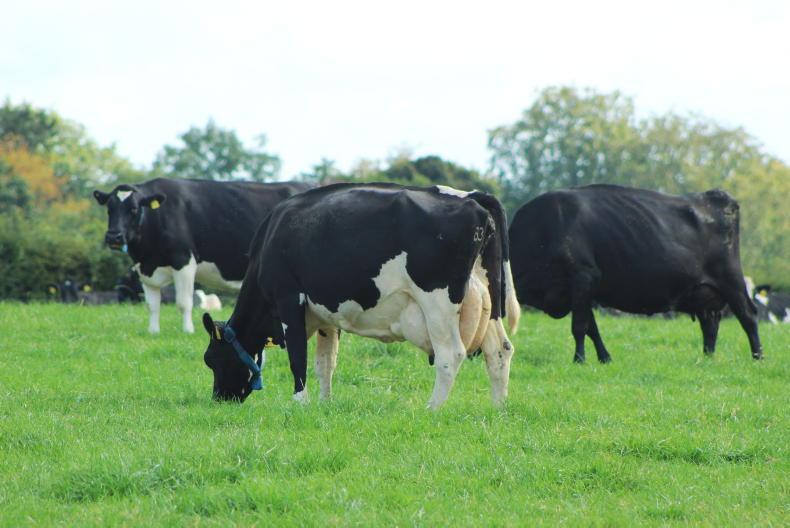
Cow size is being reduced to lower emissions.
Soils on farm sequester 525t of CO2e annually with an additional 24t captured by trees and hedges, giving a net figure of 1,470t CO2e, or 0.89kg CO2e per litre of milk produced.
It is something you won’t hear farmers getting credit for by the general public or certain areas of the media
The results of the LiDAR survey showed the farm’s soil holds 18,549t of carbon. Hedgerows and trees store 538t.
According to ArcZero chair John Gilliand, Hugh’s farm is sitting on almost 20,000t of carbon or more than 70,000t of CO2e. “That is a huge positive for the environment, but it is something you won’t hear farmers getting credit for by the general public or certain areas of the media,” John said.
Starting the journey towards net zero farming
On the Harbison farm, livestock produce 40% of the greenhouse gases emitted. Purchased feed accounts for 22%, while 17% originates from organic manures and 11% from chemical fertiliser. Therefore, Hugh’s focus is on three areas to reduce the emissions produced by his dairy farm.
Firstly, he has started to breed a smaller cow, while at the same time maintain yield and milk solids around current levels.
Reduction
Hugh said: “There is potentially a 10% reduction in emissions by reducing cow size by 150kg. Our cows are around 620kg. I’d like to get them down to 550kg and still produce 650kg of milk solids.
“These cows would be more sustainable and easier to graze on heavy land, especially in spring and autumn.
“We have cows at 700kg doing less than 600kg of milk solids. I don’t want a cow like that. She’ll be producing more emissions and producing less output for me.”
Multispecies swards
The Lidar survey flagged a 5ac grazing paddock bordering a major watercourse as being high risk for nutrient runoff.
To reduce this risk, Hugh reseeded the paddock with a multispecies sward (MSS) in July 2021 after burning off the grass sward and direct drilling.
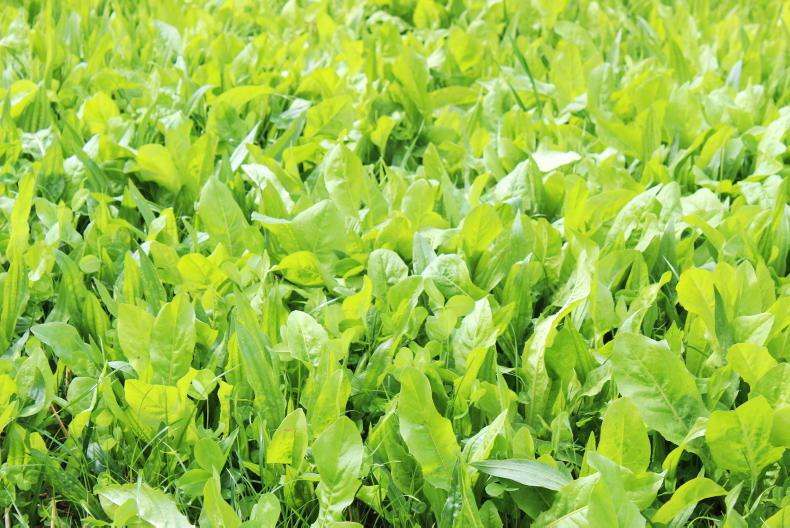
Multispecies swards established in July 2021 have yielded over 10t DM/ha this year with no chemical N.
The thinking was the MSS would be deeper-rooting, thereby opening the soil and improving drainage.
It would also be grown without fertiliser, stopping the runoff in to the watercourse.
Cows were turned out to graze on 28 March this year and the MSS has been grazed six times on a 21- to 24-day rotation.
No chemical fertiliser has been applied to the MSS in 14 months. It did get watery slurry on three occasions this year via a trailing shoe.
At the start of September, the MSS had grown 10t DM/ha. Neighbouring ryegrass paddocks have grown 9t DM/ha from 140kg/ha of chemical N.
“The paddock has been transformed. I have sown out another 10 acres of MSS this summer. It’s a no-brainer for me,” Hugh claimed.
Cutting fertiliser
The final measure is to cut chemical fertiliser use. Due to cost, a more targeted use of slurry, MSS and clover, there has been a 40% drop in chemical nitrogen use during 2022.
“The farm is low in clover, but we are making an effort to stitch more in to swards to drive grass growth.
“There is no more reseeding by ploughing on this farm as it releases carbon. All reseeding will be done by stitching or direct drilling.”
Read more
Are ACRES and organic farming a complementary fit?
NI protocol works for dairy - Lakeland CEO
Hugh Harbison farms in partnership with his father, Thompson, on a 100ha grassland farm at Aghadowey, Co Derry, milking 180 cows.
The herd is 100% autumn-calving, with 100 cows calving in September, 50 in October and the remaining 30 in November.
Despite the calving profile, there is huge emphasis on producing milk from forage, be that grazed grass or silage.
Annual yields sit around 8,626 litres/cow from 2.5t of concentrate, giving milk from forage of 3,126 litres, more than twice the Northern Ireland (NI) average.
Butterfat is 4.4% and protein at 3.54%, giving 705kg of milk solids/cow.
Cows are crossbred with Holstein, Scandinavian Red and Jersey breeding. Cows are served to AI, with 73% in-calf at six weeks and a 12% empty rate.
The farm is naturally heavy and located close to the north coast of NI. This limits the grazing season to between six and seven months. The farm is extremely well managed and farming in harmony with the environment has long been a central ethos of the business.
Over the past two years, Hugh has participated in the ArcZero project in NI, a farmer-led initiative consisting of seven farms. The project aims to demonstrate how livestock farmers can move towards net zero with ruminant production.
At the start of September, the Harbison family opened their farm to the public, outlining their progress to date.
Different focus
In his opening remarks to the large crowd in attendance, Hugh said: “I got involved with the project because farmers are constantly taking a bashing about causing climate change. I wanted to be able to tell the farmer’s side of the story.
“Agriculture accounts for 26% of greenhouse gas emissions in NI. But all the talk is about gross emissions.
“Nobody is focusing on net emissions, except for the ArcZero project. Farmers are sitting on huge stores of carbon and capturing it every year, but get no credit for this.
“Farmers are the guardians of the nation’s carbon stores. We are part of the solution to climate change.”
Carbon baseline
Last year, Hugh had a carbon audit carried out to establish a baseline for the farm under the ArcZero project. This will be replicated at the end of the project.
The audit was not just a paper and number crunching exercise. Multiple soil cores were taken across the farm to physically measure carbon levels.
Also, the farm was mapped using Lidar technology to measure carbon stored above ground in trees and hedgerows.
Net emissions
The data harvested was verified using the Agrecalc programme from the Scottish Rural College (SRUC).
Gross emissions amounted to 2,020t of CO2 equivalents, or 1.2kg CO2e per litre of milk produced.

Cow size is being reduced to lower emissions.
Soils on farm sequester 525t of CO2e annually with an additional 24t captured by trees and hedges, giving a net figure of 1,470t CO2e, or 0.89kg CO2e per litre of milk produced.
It is something you won’t hear farmers getting credit for by the general public or certain areas of the media
The results of the LiDAR survey showed the farm’s soil holds 18,549t of carbon. Hedgerows and trees store 538t.
According to ArcZero chair John Gilliand, Hugh’s farm is sitting on almost 20,000t of carbon or more than 70,000t of CO2e. “That is a huge positive for the environment, but it is something you won’t hear farmers getting credit for by the general public or certain areas of the media,” John said.
Starting the journey towards net zero farming
On the Harbison farm, livestock produce 40% of the greenhouse gases emitted. Purchased feed accounts for 22%, while 17% originates from organic manures and 11% from chemical fertiliser. Therefore, Hugh’s focus is on three areas to reduce the emissions produced by his dairy farm.
Firstly, he has started to breed a smaller cow, while at the same time maintain yield and milk solids around current levels.
Reduction
Hugh said: “There is potentially a 10% reduction in emissions by reducing cow size by 150kg. Our cows are around 620kg. I’d like to get them down to 550kg and still produce 650kg of milk solids.
“These cows would be more sustainable and easier to graze on heavy land, especially in spring and autumn.
“We have cows at 700kg doing less than 600kg of milk solids. I don’t want a cow like that. She’ll be producing more emissions and producing less output for me.”
Multispecies swards
The Lidar survey flagged a 5ac grazing paddock bordering a major watercourse as being high risk for nutrient runoff.
To reduce this risk, Hugh reseeded the paddock with a multispecies sward (MSS) in July 2021 after burning off the grass sward and direct drilling.

Multispecies swards established in July 2021 have yielded over 10t DM/ha this year with no chemical N.
The thinking was the MSS would be deeper-rooting, thereby opening the soil and improving drainage.
It would also be grown without fertiliser, stopping the runoff in to the watercourse.
Cows were turned out to graze on 28 March this year and the MSS has been grazed six times on a 21- to 24-day rotation.
No chemical fertiliser has been applied to the MSS in 14 months. It did get watery slurry on three occasions this year via a trailing shoe.
At the start of September, the MSS had grown 10t DM/ha. Neighbouring ryegrass paddocks have grown 9t DM/ha from 140kg/ha of chemical N.
“The paddock has been transformed. I have sown out another 10 acres of MSS this summer. It’s a no-brainer for me,” Hugh claimed.
Cutting fertiliser
The final measure is to cut chemical fertiliser use. Due to cost, a more targeted use of slurry, MSS and clover, there has been a 40% drop in chemical nitrogen use during 2022.
“The farm is low in clover, but we are making an effort to stitch more in to swards to drive grass growth.
“There is no more reseeding by ploughing on this farm as it releases carbon. All reseeding will be done by stitching or direct drilling.”
Read more
Are ACRES and organic farming a complementary fit?
NI protocol works for dairy - Lakeland CEO







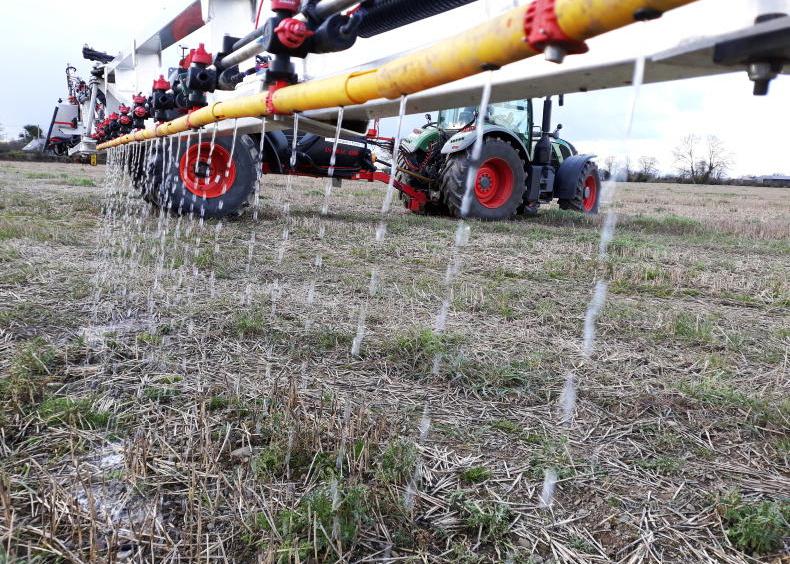
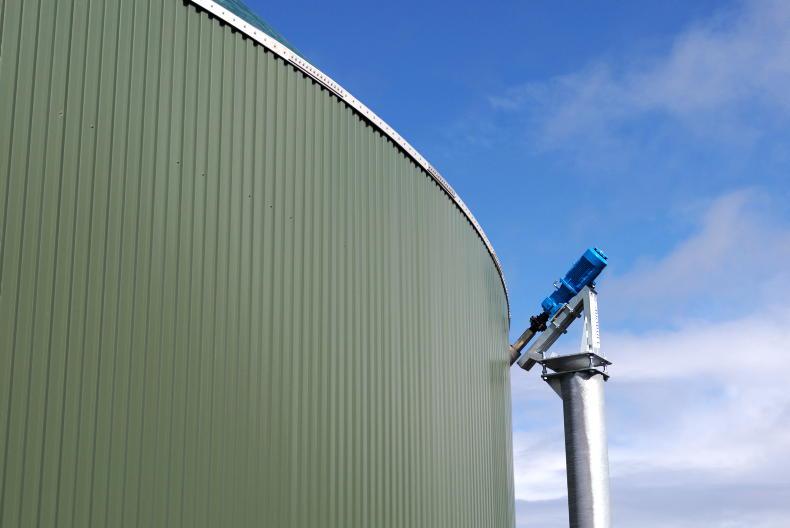
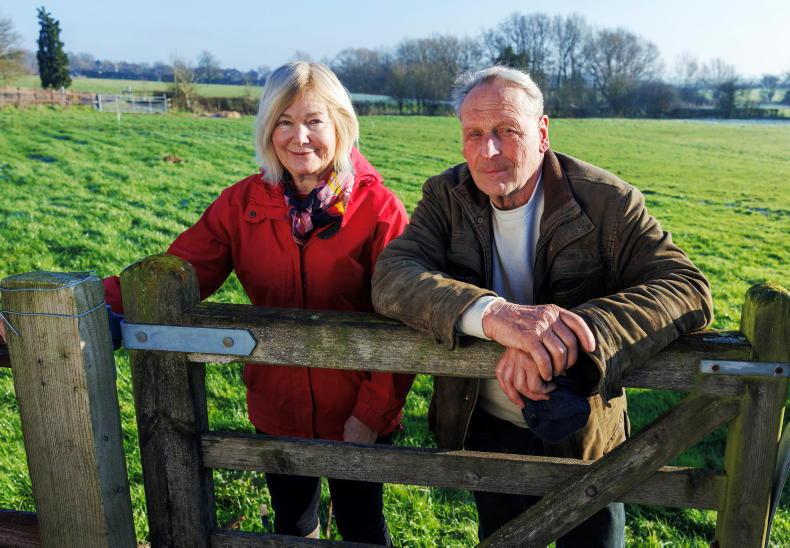
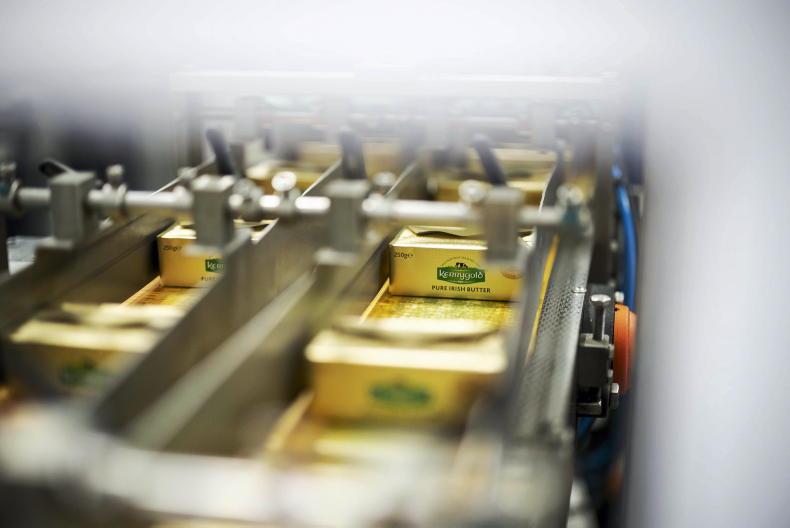
SHARING OPTIONS